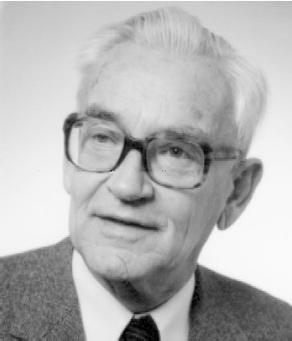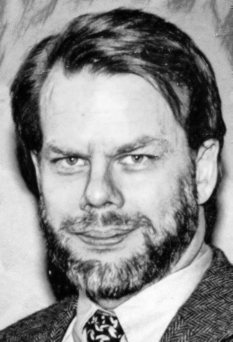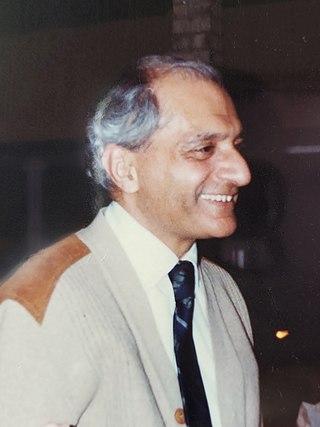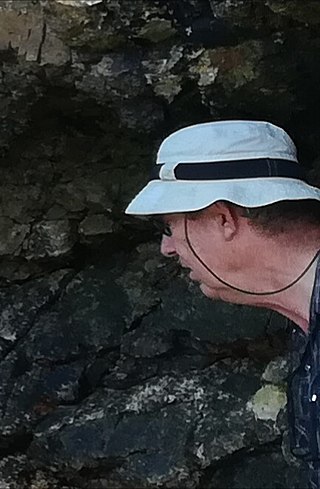
Johannes Diderik van der Waals was a Dutch theoretical physicist and thermodynamicist famous for his pioneering work on the equation of state for gases and liquids. Van der Waals started his career as a schoolteacher. He became the first physics professor of the University of Amsterdam when in 1877 the old Athenaeum was upgraded to Municipal University. Van der Waals won the 1910 Nobel Prize in physics for his work on the equation of state for gases and liquids.

Leonard Susskind is an American theoretical physicist, Professor of theoretical physics in Stanford University and founding director of the Stanford Institute for Theoretical Physics. His research interests are string theory, quantum field theory, quantum statistical mechanics and quantum cosmology. He is a member of the US National Academy of Sciences, and the American Academy of Arts and Sciences, an associate member of the faculty of Canada's Perimeter Institute for Theoretical Physics, and a distinguished professor of the Korea Institute for Advanced Study.

Erik Peter Verlinde is a Dutch theoretical physicist and string theorist. He is the identical twin brother of physicist Herman Verlinde. The Verlinde formula, which is important in conformal field theory and topological field theory, is named after him. His research deals with string theory, gravity, black holes and cosmology. Currently, he works at the Institute for Theoretical Physics at the University of Amsterdam.
In the mathematical study of logic and the physical analysis of quantum foundations, quantum logic is a set of rules for manipulation of propositions inspired by the structure of quantum theory. The formal system takes as its starting point an observation of Garrett Birkhoff and John von Neumann, that the structure of experimental tests in classical mechanics forms a Boolean algebra, but the structure of experimental tests in quantum mechanics forms a much more complicated structure.

Lattice QCD is a well-established non-perturbative approach to solving the quantum chromodynamics (QCD) theory of quarks and gluons. It is a lattice gauge theory formulated on a grid or lattice of points in space and time. When the size of the lattice is taken infinitely large and its sites infinitesimally close to each other, the continuum QCD is recovered.
In quantum field theory, a nonlinear σ model describes a scalar field Σ which takes on values in a nonlinear manifold called the target manifold T. The non-linear σ-model was introduced by Gell-Mann & Lévy, who named it after a field corresponding to a spinless meson called σ in their model. This article deals primarily with the quantization of the non-linear sigma model; please refer to the base article on the sigma model for general definitions and classical (non-quantum) formulations and results.
In lattice field theory, fermion doubling occurs when naively putting fermionic fields on a lattice, resulting in more fermionic states than expected. For the naively discretized Dirac fermions in Euclidean dimensions, each fermionic field results in identical fermion species, referred to as different tastes of the fermion. The fermion doubling problem is intractably linked to chiral invariance by the Nielsen–Ninomiya theorem. Most strategies used to solve the problem require using modified fermions which reduce to the Dirac fermion only in the continuum limit.

Nikolay Nikolayevich Bogolyubov, also transliterated as Bogoliubov and Bogolubov, was a Soviet and Russian mathematician and theoretical physicist known for a significant contribution to quantum field theory, classical and quantum statistical mechanics, and the theory of dynamical systems; he was the recipient of the 1992 Dirac Medal.

Dirk Polder was a Dutch physicist working on solid-state physics, magnetism, molecular physics and nanoscale physics.
Jan Ambjørn is a Danish theoretical physicist. He received his PhD in 1980 at the Niels Bohr Institute in Copenhagen, followed by postdoctoral research positions at Caltech and Nordita. He has been employed at the Niels Bohr Institute from 1986, since 1992 as professor in theoretical physics. From 2003 to 2010 he was also a professor at Utrecht University, and since 2012 he has been a professor at Radboud University, both in the Netherlands.

David B. Kaplan is an American physicist. He is a professor of physics at the University of Washington, where he was director of the Institute for Nuclear Theory during the period 2006–2016 and is now a senior fellow.

David James Edward Callaway is a biological nanophysicist in the New York University School of Medicine, where he is professor and laboratory director. He was trained as a theoretical physicist by Richard Feynman, Kip Thorne, and Cosmas Zachos, and was previously an associate professor at the Rockefeller University after positions at CERN and Los Alamos National Laboratory. Callaway's laboratory discovered potential therapeutics for Alzheimer's disease based upon apomorphine after an earlier paper of his developed models of Alzheimer amyloid formation. He has also initiated the study of protein domain dynamics by neutron spin echo spectroscopy, providing a way to observe protein nanomachines in motion.

Aneesur Rahman pioneered the application of computational methods to physical systems. His 1964 paper on liquid argon studied a system of 864 argon atoms on a CDC 3600 computer, using a Lennard-Jones potential. His algorithms still form the basis for many codes written today. Moreover, he worked on a wide variety of problems, such as the microcanonical ensemble approach to lattice gauge theory, which he invented with David J E Callaway.

David Ian Olive ; 16 April 1937 – 7 November 2012) was a British theoretical physicist. Olive made fundamental contributions to string theory and duality theory, he is particularly known for his work on the GSO projection and Montonen–Olive duality.
Donald Henry Weingarten is a computational physicist.
In lattice field theory, the Nielsen–Ninomiya theorem is a no-go theorem about placing chiral fermions on the lattice. In particular, under very general assumptions such as locality, hermiticity, and translational symmetry, any lattice formulation of chiral fermions necessarily leads to fermion doubling, where there are the same number of left-handed and right-handed fermions. It was originally proved by Holger Bech Nielsen and Masao Ninomiya in 1981 using two methods, one that relied on homotopy theory and another that relied on differential topology. Another proof provided by Daniel Friedan uses differential geometry. The theorem was also generalized to any regularization scheme of chiral theories. One consequence of the theorem is that the Standard Model cannot be put on the lattice. Common methods for overcoming the fermion doubling problem is to use modified fermion formulations such as staggered fermions, Wilson fermions, or Ginsparg–Wilson fermions.
John Benjamin Kogut is an American theoretical physicist, specializing in high energy physics.
Andrei Alekseevich Slavnov was a Russian theoretical physicist, known for Slavnov–Taylor identities.

Jan Smit is a Dutch paleontologist. He was affiliated with the Faculty of Earth and Life Sciences at the Vrije Universiteit Amsterdam from 2003 to 2013 as a professor of event stratigraphy, studying rapid changes in the geological record related to mass extinctions.

Dean Lee is an American nuclear theorist, researcher and educator. He is a professor of physics at the Facility for Rare Isotope Beams (FRIB) and the Department of Physics and Astronomy at Michigan State University and department head of Theoretical Nuclear Science at FRIB.












